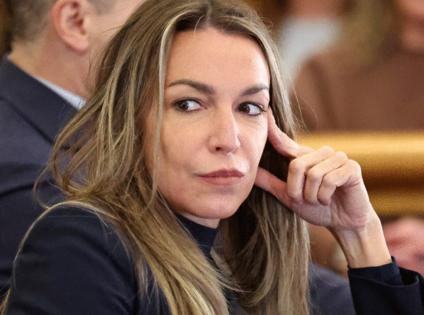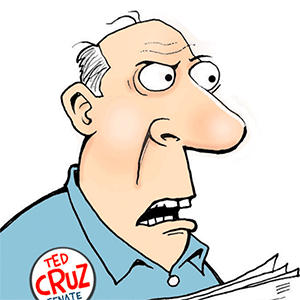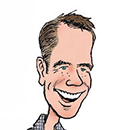The defense starts its case in Karen Read retrial
Published in News & Features
DEDHAM, Mass. — A Karen Read attorney began the first day of the defense’s case arguing that the whole case should be thrown out. That motion was denied, though the argument sets up the case that is to follow.
“The Commonwealth has simply not proven, even in a light most favorable to them, that there was a collision on Jan. 29, 2022, at 34 Fairview in Canton, Massachusetts,” defense attorney Alan Jackson argued before the jury was brought in. “There was no eyewitness presented, there was no video evidence, no audio evidence, no evidence in the form of physical evidence at the scene by searches that were done by officers on the morning of Jan. 29, 2022.”
He made several points to back that assertion, including that state medical examiner Dr. Irini Scordi-Bello, “the only person to have physical access to John O’Keefe’s body” said he didn’t have any injuries consistent with a vehicle strike. Further, he said, expert testimony presented “circumstantial, technical data (that) only sought to prove a backing event” and that the prosecution’s final technical witness, Judson Welcher of Aperture, himself said there was “simply not enough evidence” to have spoken to particulars of a crash.
In contrast, Jackson said, there is evidence that points to a possible third-party killer: homeowner Brian Albert was “sparring” with ATF Agent Brian Higgins inside the home and there was ample evidence that Higgins “was lovestruck, he was jealous” over Read’s affections. Witnesses at the house that night, he said, all testified they didn’t see O’Keefe in the vehicle at the time the prosecution said he should have been and thus “There’s only one place he could be … Inside the house, or inside the garage.”
“That night, John O’Keefe and Karen Read were loving, caring, affectionate. There’s absolutely no evidence that Karen Read had any intent to harm John O’Keefe,” Jackson said. “The Commonwealth at the end of the day has presented their best case. They’ve done their best — some would say they’ve done their worst — and their case has failed.”
Prosecutor Hank Brennan responded that “the evidence of collision is abundant,” which included taillight fragments from Read’s SUV were found on O’Keefe’s clothing, that she did a backup maneuver that reached “at least 24 mph” at the time of the alleged crash, and that injuries to O’Keefe’s arm are consistent with the SUV’s damaged taillight.
Further, Brennan added, media statements aired since the last trial included “many, many admissions by the defendant about her level of intoxication, which far surpassed the statutory mandate that she consumed alcohol in a way that would affect her ability to operate safely.” This is backed, he said, by blood serum tests that confirmed intoxication.
Judge Beverly J. Cannone denied Jackson’s motion to dismiss the charges.
The witness
Once the jury was brought in, Jackson called the defense’s first witness: Matthew DiSogra, an engineer employed as a collision reconstructionist for a firm called “Delta |v|.”
DiSogra’s purpose on the stand was to poke holes through the testimony and analysis of the prosecution’s experts from Aperture LLC.
DiSogra said that he reviewed the reports from both Welcher and Shanon Burgess and concluded that Welcher’s report relied on Burgess’ correction of clock data from Read’s Lexus LX570. Those corrections, DiSogra testified, were wrong. So DiSogra said that he calculated all the possible clock data adjustments based on the Aperture reports.
What he was looking for was whether there the last time O’Keefe interacted with his phone, which was a “lock” event, was either before or after Read’s Lexus sped into reverse — the action the prosecution says led to O’Keefe’s death.
He did this first for Burgess’ first report, which was based on reconciling vehicle “techstream” data — an in-vehicle system which records unusual vehicle events, like the backup event — with phone calls made between the vehicle and O’Keefe’s phone.
He found that all results show a “positive” interaction window for O’Keefe’s lock event, “meaning regardless of what adjustment we make, the phone lock event always occurs after the end of event 1162-2.”
“In the absence of any external data to support one path, the most valid approach is to look at all of them as a whole and then draw the conclusion from the totality of that data rather than cherry picking a single point,” DiSogra said.
Then he ran through all the permutations based on Burgess’ second report, which reconciled the clocks by matching the techstream clock to O’Keefe’s phone’s clock based on a three-point turn that occurred ahead of the alleged collision.
In this analysis, he found that “25 of 30 possibilities result in interactions with O’Keefe’s phone after the end of the vehicle event” — a result that is good for the defense theory that there was no collision. In contrast, two of the possibilities indicate O’Keefe interacted with his phone at the same time as the backup and three of the possibilities show him interacting with the phone before the backup event.
The cross
Prosecutor Brennan was conducting a cross examination before lunch break that was almost immediately aggressive.
Following an early question about whether or not a techstream trigger event would occur for a sudden acceleration of the vehicle to which DiSogra said that in itself wouldn’t be a trigger, Brennan asked “Are you sure you know a lot about techstream data?”
Brennan had DiSogra establish that his own presentation was submitted May 25, just days ago, even though he admitted that all he had dones was “simple” arithmetic on numbers already provided in the Aperture witness reports.
DiSogra’s role was simply to “criticize” the prosecution experts’ work without doing any testing of his own, Brennan asserted through questioning. DiSogra also confirmed that he used only Welcher’s PowerPoint presentation without delving into the “massive amount of data” behind it, but DiSogra countered that it was only the conclusions in the PowerPoint he was asked to review.
--------------
©2025 MediaNews Group, Inc. Visit at bostonherald.com. Distributed by Tribune Content Agency, LLC.







Comments